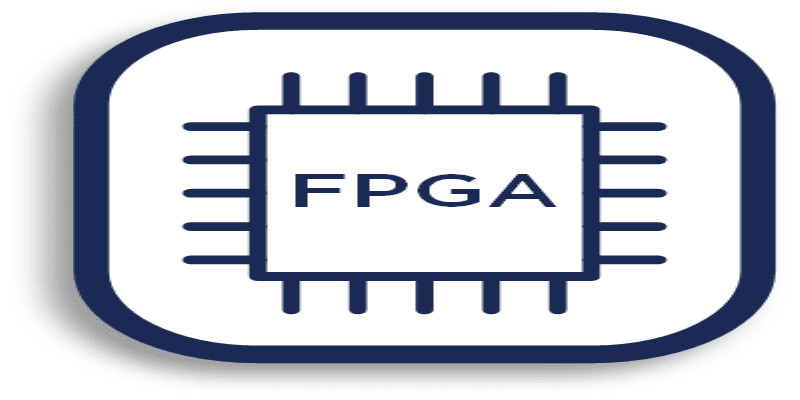
About Course
The objective of this course is to acquire proficiency with Field Programmable Gate Arrays FPGA Design for the purpose of creating prototypes or products for a variety of applications. Although FPGA design can be a complex topic, we will introduce it so that, with a little bit of effort, the basic concepts will be easily learned, while also providing a challenge for the more experienced designer. We will explore the complexities, capabilities, and trends of Field Programmable Gate Arrays (FPGA) and Complex Programmable Logic Devices (CPLD). Conception, design, implementation, and debugging skills will be practiced. We will learn specifics around embedded IP and processor cores, including tradeoffs between implementing versus acquiring IP. Projects will involve the latest software and FPGA development tools and hardware platforms to help develop a broad perspective of the capabilities of various Programmable SoC solutions. Topics include:
- Verilog, VHDL, and RTL design for FPGA and CPLD architectures
- FPGA development tools flow: specify, synthesize, simulate, compile, program, and debug
- Configurable embedded processors and embedded software
- Use of soft-core and hard-core processors and OS options
- FPGA System engineering, software-hardware integration, and testing
- IP development and incorporating 3rd-party IP
Who this course is for:
- Anyone who wants to learn FPGA design.
- Arduino Makers who want to take the next step into embedded systems.
- Hardware engineers who would like to learn about the exciting field of FPGA design
- This course is not for experienced embedded engineers specialized in FPGAs.
Course Content
FPGA Design for Embedded Systems
-
Course OverviewLesson
00:00 -
Xilinx CPLD Architecture
00:00 -
Xilinx Small FPGAs
00:00 -
Xilinx Large FPGAs
00:00 -
Altera CPLDs and Small FPGAs
00:00 -
Altera Large FPGAs
00:00 -
Microsemi Single chip FPGA solutions
00:00 -
Lattice Single Chip FPGA solutions
00:00 -
FPGA Design Expertise
00:00 -
Advanced Schematic Entry for FPGA Design Drawing and Hierarchy
00:00 -
Improving Productivity with IP Blocks
00:00 -
Improving Timing with Pipelining
00:00 -
FPGA IO Getting In and Getting Out
00:00 -
Pin Assignments Making them Spot On!
00:00 -
Programming the FPGA
00:00 -
Becoming one with Q Qsys System Design
00:00 -
Becoming one with Q Part II Qsys System Design Finishing Touches
00:00 -
Many types of FPGAs
00:00 -
Simulate a design with ModelSim
00:00 -
Programmable logic and FPGA design
00:00 -
A Brief History of Programmable Logic
00:00 -
CPLD Architecture
00:00 -
LUTs and FPGA Architecture
00:00 -
LUTs for Logic Design
00:00 -
Designing Adders
00:00 -
Designing Multipliers
00:00 -
FPGA Design Flow
00:00 -
Downloading Quartus Prime
00:00 -
Installing Quartus Prime
00:00 -
Introducing Quartus Prime
00:00 -
Create a design in Quartus Prime
00:00 -
Compile a Design
00:00 -
View the RTL
00:00 -
Timing Analysis with Time Quest I
00:00 -
Timing Analysis with Time Quest II
00:00 -
Becoming one with Q Part III Qsys System Design Finishing Touches
00:00
Student Ratings & Reviews

No Review Yet
